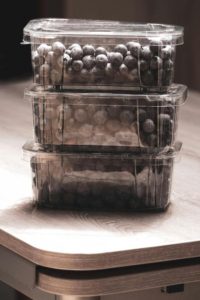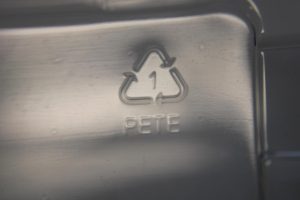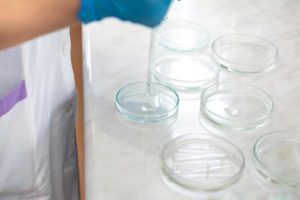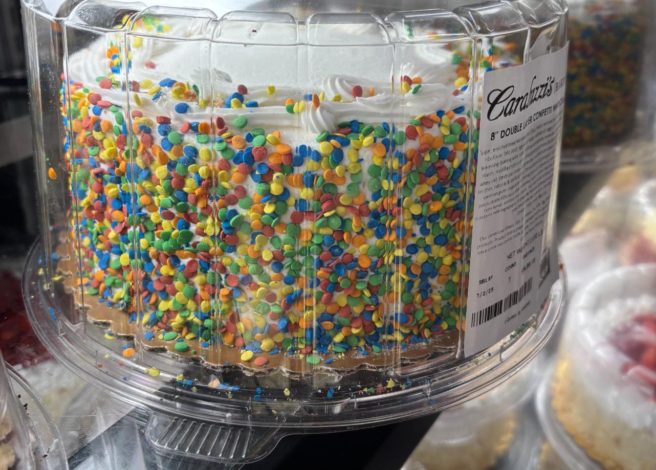At a Glance
- PET, HDPE, and PP plastics are phthalate-free and safe for food use.
- Phthalates are used in flexible PVC, not rigid food containers.
- FDA regulations and supplier documents help confirm packaging safety.
- Stick with proven materials and trusted suppliers to avoid phthalate concerns.
You’re running a successful food business that focuses on delivering high-quality products to your customers. Yet, year after year, you hear media stories about new concerns or threats to the safety of your products and customers. You try to parse these out rationally. Then you see another headline about phthalates in packaging, and suddenly your mind is running a mile a minute wondering:
“Am I pronouncing that correctly? THAL-ates?”
“Are there phthalates in my plastic food containers?”
“I swear that when I looked up what PET stood for, that word ‘phthalate’ was in there. Should I be worried?”
“How do I protect my customers and my business?”
It’s okay; we’re here to help. This concern isn’t unfounded. As a food industry professional, you must ensure the safety of your products. You also navigate a complex world of packaging rules and consumer awareness. The challenge is separating fact from fear when it comes to packaging safety.
This week, we had a conversation with Conor Carlin, President of Clefs Advisory LLC. Working where packaging and sustainability converge, Conor previously served as the 2024 President of the Society of Plastics Engineers and was the former General Manager for ILLIG in North America. His background includes expertise in materials, packaging technologies, policy, commercial strategy, and market intelligence.
This article will explain which common packaging materials are phthalate-free. You’ll learn how to check your packaging for safety. Additionally, it will explore how modern food packaging science has largely addressed these issues.
And yes, you did pronounce “phthalates” correctly.
What Exactly Are Phthalates?
 The worry about phthalates in food packaging is real. Yet, it often fails to provide the scientific knowledge that food professionals need for informed decisions. Phthalates are plasticizers — additives used to make certain plastics more flexible and pliable. They have gained attention for two reasons. First, they can migrate to the surface of some packaging products and possibly contaminate the food inside. Second, they’ve been identified as endocrine disruptors.
The worry about phthalates in food packaging is real. Yet, it often fails to provide the scientific knowledge that food professionals need for informed decisions. Phthalates are plasticizers — additives used to make certain plastics more flexible and pliable. They have gained attention for two reasons. First, they can migrate to the surface of some packaging products and possibly contaminate the food inside. Second, they’ve been identified as endocrine disruptors.
However, here’s what many headlines don’t tell you: phthalates are not commonly used in standard food packaging materials. The main issue isn’t just contamination. It’s the absence of clear, science-based info. Food professionals need guidance on which packaging is safe and the reasons behind it. While the FDA does permit the use of certain phthalates — currently nine — for food contact applications, it’s done under strict conditions and based on safety assessments. Still, the presence of these allowances adds to the confusion and underscores the need for more transparent, up-to-date guidance for industry decision-makers.
Your Guide to Phthalate-Free Food Packaging
Modern packaging materials are flexible, clear, and durable — not because of added chemicals, but because of how they’re engineered at the molecular level. Here’s what you should know about the packaging you’re probably already using.
The Materials You Can Trust
PET (Polyethylene terephthalate) containers: PET is the gold standard for food packaging safety. Although PET sounds like “phthalate,” it doesn’t contain any phthalates. Your earlier concern is still valid. This clear, lightweight plastic is used in bottles, clamshells, and food containers. Its properties come from its molecular structure, not from plasticizing additives.
Standard Food-Grade Plastics
 Today, most food packaging relies on the chemistry of base polymers. This approach minimizes the need for additives like phthalates.
Today, most food packaging relies on the chemistry of base polymers. This approach minimizes the need for additives like phthalates.
These include:
- High-density polyethylene (HDPE) products such as milk jugs and food storage containers.
- Polypropylene (PP) products like yogurt containers, bottle caps, and food storage containers.
- Low-density polyethylene (LDPE) products such as food storage bags.
Where Phthalates Are Actually Used
Phthalates are mainly used to make PVC plastic “bendy” — like in house siding, water pipes, and shower curtains. But here’s the thing: food packaging doesn’t need to be super flexible. Your takeout container doesn’t need to bend like a garden hose (but could you imagine if it did!?). That’s why food packaging makers skip the phthalates entirely and use naturally food-safe materials.
The historical concerns around phthalates mainly involved:
- Children’s toys (now heavily regulated)
- Vinyl products requiring flexibility
- Some industrial applications
How to Verify That Your Packaging is Phthalate-Free
Most food packaging is phthalate-free, and we want to emphasize that point. Here are three simple ways to check and ensure peace of mind for you and your customers.
Check Your Supplier Documentation
Request certificates of compliance from your packaging suppliers. Trusted manufacturers provide proof that their materials comply with FDA food contact regulations. This means they do not have harmful levels of substances like phthalates.
Understand Resin Identification Codes

You know, those codes on packages with arrows in a triangle? Most food packaging falls into Resin-Identification Codes (RIC) 1, 2, and 5:
- Code 1: PET (inherently phthalate-free)
- Code 2: HDPE (no phthalates needed)
- Code 5: PP (polypropylene, naturally flexible)
These materials achieve their properties through polymer chemistry, not plasticizing additives.
Look for FDA Compliance
Any packaging labeled FDA-approved for food contact has been tested. This ensures that harmful substances do not migrate above safe limits. This regulatory framework provides the assurance you need.
The Science Behind the Safety
 You don’t need a chemistry degree to understand why today’s food packaging is safer than ever. Let’s break down the simple science behind modern packaging that is naturally phthalate-free.
You don’t need a chemistry degree to understand why today’s food packaging is safer than ever. Let’s break down the simple science behind modern packaging that is naturally phthalate-free.
Why Modern Food Packaging Doesn’t Need Phthalates
Engineers design today’s food packaging materials at the molecular level. PET bottles get their clarity and strength from oriented polymer chains. Polypropylene containers are naturally flexible. These materials don’t require external plasticizers to function effectively, though they can use other “workhorse” additives that provide specific properties like anti-fog, anti-slip, or UV stabilizers.
Regulatory Protection You Can Count On
Multiple layers of regulation protect food packaging safety:
- FDA oversight ensures materials meet strict migration standards.
- Industry standards require extensive testing before a product can be approved for market release.
- International harmonization means similar safety standards can be applied globally, though regulatory regimes do still differ across the world.
The regulatory framework is based on the principle that “the dose makes the poison.” This means allowable levels are much lower than what could cause harm.
Practical Steps for Food Business Pros
Now that you know the facts, here’s your simple four-step plan to confirm your packaging is safe and keep your business running smoothly.
1. Audit Your Current Packaging
Review your packaging suppliers and request material safety documentation. Most will readily provide certificates confirming their products meet food safety standards.
2. Choose Established Materials
Stick with proven food packaging materials, such as PET, HDPE, and PP. These have a decades-long history of safe use and don’t require phthalates in packaging.
3. Work with Reputable Suppliers
Work with packaging suppliers who are familiar with food safety regulations. They should also provide clear documents about what their materials contain.
4. Stay Informed, Not Alarmed
Follow reputable sources for packaging safety information. Organizations like the FDA, industry associations, and established packaging manufacturers provide science-based guidance.
Safety and Success, No Strings (or Phthalates) Attached
 You entered the food industry to provide your customers with quality products, not to become a chemistry expert. The good news? You don’t have to be. Understanding that standard food packaging materials like PET, HDPE, and PP are inherently phthalate-free allows you to focus on what matters most — your food quality and customer satisfaction.
You entered the food industry to provide your customers with quality products, not to become a chemistry expert. The good news? You don’t have to be. Understanding that standard food packaging materials like PET, HDPE, and PP are inherently phthalate-free allows you to focus on what matters most — your food quality and customer satisfaction.
The packaging industry has basically done the hard work for you. They saw the phthalate drama coming from a mile away and said, “Nope, we’re not dealing with this.” So, they created materials that are naturally safe without any sketchy add-ins. By sticking with the usual suspects — PET, HDPE, and PP — you’re already winning at food safety, even if you didn’t know you were playing the game.
So go ahead and focus on perfecting that secret sauce recipe instead of memorizing the periodic table. We’ve got you covered.
Are you interested in learning about plastic packaging for fresh foods? Visit our Learning Center today and explore a variety of topics.
Would you like to know more about Conor Carlin and his work at Clefs Advisory LLC? Connect with him on LinkedIn today.

